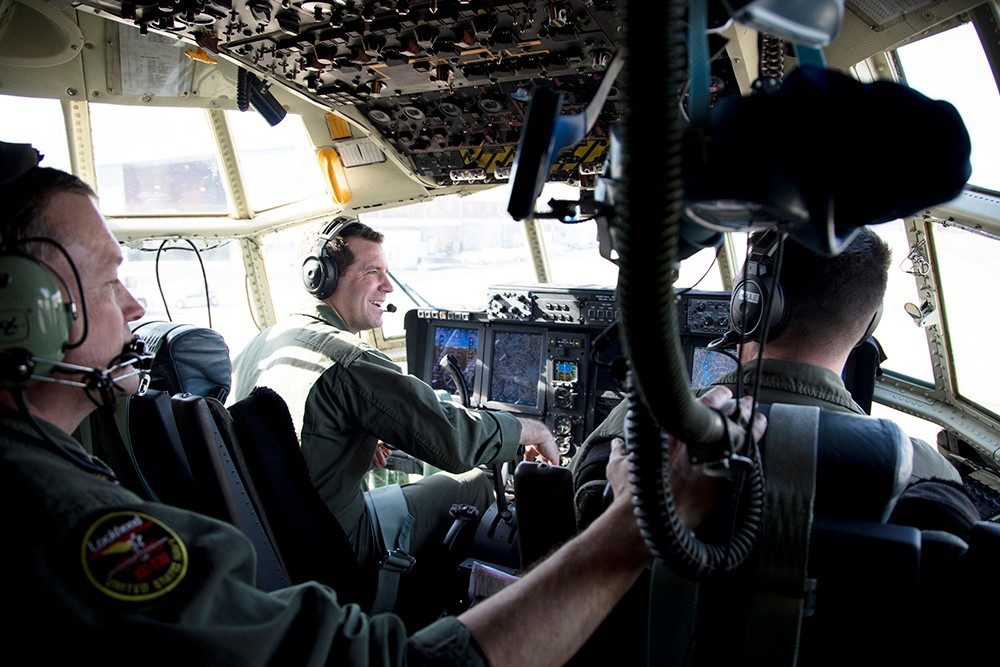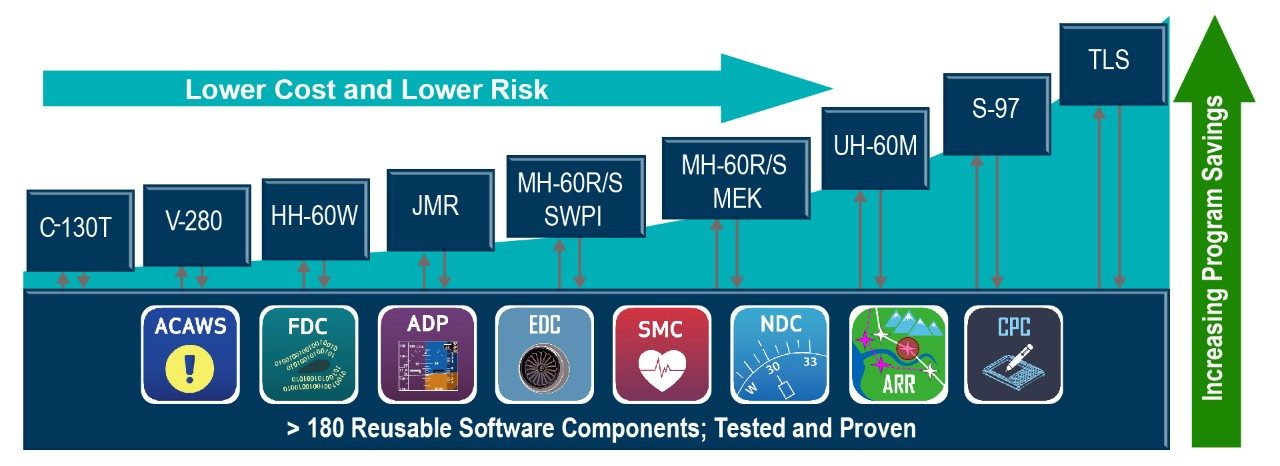Common Open Reuse Environment (CORE) Cockpit
High Re-use, Lowest Risk, Affordable
• In partnership with the DoD, development, integration and test of the software and avionics solution addresses CNS/ATM Navigation-Safety compliance, Net Readiness, and legacy Avionics obsolescence.
• Previously integrated instantiations of the CORE cockpit enables a high-reuse CNS/ATM compliant solution.
• The CORE cockpit, when complemented with Lockheed Martin’s breadth of expertise, provides customers a complete offering from installation, training, transition, and organic support.

Lockheed Martin provides the cockpit, integrated avionics and mission systems on the V-280 Valor for the U.S. Army’s Joint Multi Role (JMR) and Future Vertical Lift (FVL) programs and embraces a Modular Open System Approach (MOSA) by:
• Developing an integrated CORE digital glass cockpit and avionics system that utilizes the FACETM reference architecture.
• Providing the foundation of the software applications used on V-280, leveraging re-useable software and contributing back to the software library.
• Significantly reducing development costs, schedule, and risk, helping to address obsolescence impacts on current and future cockpit and avionics systems.
Flight-proven Fielded Cockpit
• The Lockheed Martin CORE Cockpit first flew in December 2017, which was Lockheed Martin’s first flight of a fully “app-based" cockpit and avionics system.
• The CORE open architecture design positions the V-280 to accept additional avionics equipment and mission system capabilities to meet the needs for the next generation rotary wing aircraft

The Lockheed Martin Common Open Reuse Environment (CORE) cockpit represents the first fielded all “app-based” cockpit and avionics solution that was originally designed to be in alignment with the FACETM standard, providing customers with a truly open and scalable avionics solution to address evolving civil and tactical airspace requirements. Central to this scalable architecture is a unique Flight Management System (FMS) which fully integrates tactical and civil airspace functionality providing the flight crew with a single seamless flight plan which can interleave civil and tactical waypoints thereby enhancing mission effectiveness.
Full CNS/ATM Functionality
• LPV (Localizer Performance with Vertical Guidance) per AC 90-107
• RNP 0.3 & Baro-VNAV per DO-236B
• ADS-B per AC 20-165A, DO-260B
• WAAS GPS per TSO-C145c, TSO-C146c
• TAWS per TSO-C151b, FAA Notice 8110.64
• TCAS per DO-185B
• MFD per DO-257A, DO-185B
• Enhanced Mode S (EHS) per ICAO Annex 10
• ACARS/CPDLC per; ATN Baseline 2, ARINC-739 via VDL Mode 2 and Iridium SATCOM
Blended Tactical Functionality
• CARP per AFI 11-231
• Search and Rescue Patterns per Joint Pub 3-50 SAR Manual
• Refueling Patterns per ATP-56
• Anti-Jam SAASM GPS with M Code
• IFF Mode 5
• Self-contained Tactical Approaches




Common Product Library (CPL)
CPL Advantages:
• Increasing reuse and reliability
• Decreasing time to deployment and development risk
• Optionally configured to support security requirements
• Flexibility and scalability
• Easy upgrades and maintainability as technology advances
• Designed for ease of upgradability (COTS cards can easily be upgraded to the latest technology)
CPL SW Features:
• Designed in alignment with FACETM standard
• 180+ portable SW components
• 400,000 lines of reuse SW code
• Designed to meet DO-178B/C safety-of-flight requirements

Controls & Displays Features:
• True, hemispherical viewing cone in portrait or landscape orientation
• Configurable to operate from four to eight displays
• NVIS certified
• Dual Graphics/Processor Cards support flight/mission applications concurrently with Digital Map function
• Flexible Graphical User Interface
Integrated Software Applications:
• More than 180 ARINC-653 time/space partitioned portable software components designed in alignment with FACE™ standard
• These software components include the applicable data and software rights to allow third party integration of other FACE™ conformant software components
Portable Software Components consist of these three categories:
• Device Drivers: isolate unique interface requirements for each hardware subsystem enabling rapid subsystem reconfiguration
• Graphics Skins and Widgets: separates the look and feel of the graphics from the core graphic processing providing multiple display configuration option without affecting certification
• Functional Applications: breaks functional operational capabilities into their functional subcomponents providing rapid mission reconfiguration e.g. Flight Management System






